Stroke of the eyes( occlusion): the first signs, treatment, consequences
There are such diseases, which are spoken about everywhere. Among them, the most common and at the same time dangerous are stroke and heart attack. Information on these ailments is regularly broadcast on television. It is so simple and understandable that even a person far from medicine can understand it. However, some diseases, despite the frequency of their manifestations, prefer to rarely speak. One such is a stroke of the eye.
What is it?
For the full functioning of the human body, the visual system plays a huge role. The eye is a paired sensory organ with a branched vascular network. She is responsible for nutrition and metabolic processes. When one of the eye arteries is blocked, blood supply to the entire organ is disturbed, which leads to pathological processes of the retina and optic nerve. Such a violation is a stroke of the eye or an occlusion. 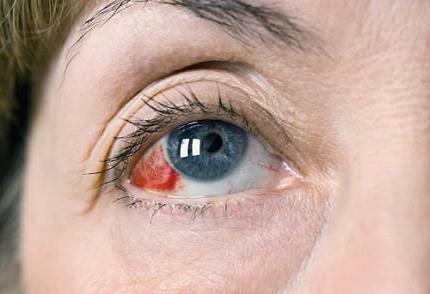
The danger of this disease is that it occurs in most cases( about 30%) asymptomatically. Therefore, many people perceive minor visual disturbances for age-related changes and do not pay due attention to them. Lack of treatment in the early stages significantly reduces the chances of a complete recovery of vision. This pathology is characterized by rapid development. Over time, it can cause a complete loss of visual function.
Risk group
Most often the disease develops in people of older age( after 60 years).In such patients, neurologists report a more severe course of eye stroke.
On the other hand, there are certain risk factors that contribute to the emergence and progression of pathology among people of young and adulthood:
- constant and long work at the computer;
- stresses, psychological disorders;
- excessive fatigue, physical and mental fatigue;
- inaccuracies in the diet( the use of excessively salty and spicy food, fried foods);
- weighed down by heredity;
- long-term use of corticosteroids and oral contraceptives;
- addictions.
The main causes of
Ischemic cerebral problems occur against the background of vessel occlusion( clotting with clots, emboli) or as a result of prolonged spasm of the vessels of the eyeball, brain and neck. These disorders cause a violation of the blood supply areas of the brain in the zone of the visual lobes, the center of the eye or oculomotor centers.
Among other causes of stroke eye doctors distinguish:
- diseases associated with vascular lesions( atherosclerosis, arrhythmias, endocarditis, hypertension, etc.);
- pathologies that promote degenerative changes in the vascular wall( tumors, calcidosis, diabetes, encephalitis).
Pathogenesis of the disease
The disorders and diseases listed above lead to the formation of thrombi or emboli. Under the latter is commonly understood to be blood clots, bacteria, crystals of calcium, cholesterol. At some point, these structures can break away from the walls of the arteries, and, together with the blood stream, get into the vessels of the eye. In this case, the full blood supply is broken. If the embolus or thrombus dissolve spontaneously, vision is restored completely or partially. Other unpleasant symptoms of a stroke of the eye gradually disappear.
As a rule, thrombi and emboli, which present a potential threat to the visual apparatus, arise in the carotid or coronary arteries. Under favorable conditions( infection, allergy, trauma to the eye), formations break away from the arterial walls and clog the central vessel of the eye. 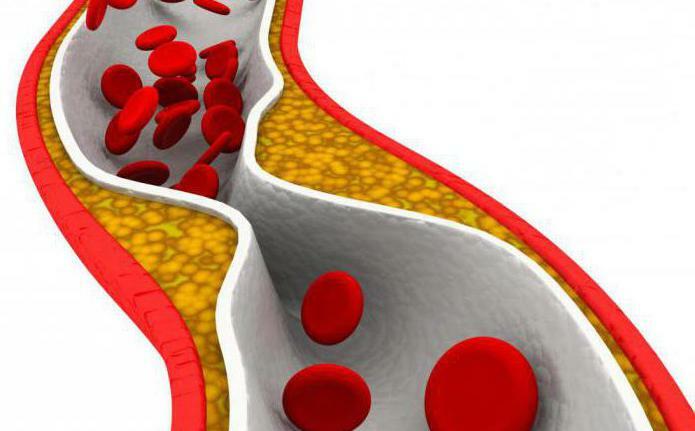
Clinical picture of
The first symptoms of an eye stroke can be seen with the naked eye: there are pinpoint hemorrhages or hemorrhages. What other disturbing signs should I pay attention to?
- Part of the image image becomes fuzzy. When a healthy eye sees in a radius of 85 degrees, the patient's peripheral vision becomes worse.
- With a sharp tilt or turn of the head before your eyes appear "flies", "stars."A person loses the opportunity to view nearby objects, everything around starts to double.
- Partial or complete loss of vision. The patient appears cataract, sometimes there is a clouding of the lens.
If any of the listed signs of a stroke occur, the eye should be turned to the oculist. Only a specialist can correctly diagnose, determine the form of the pathological process. In total there are several types of ischemic disorder: central occlusion of arteries, separation of retinal veins, occlusion of arteries and retinal detachment. Consider what each of the variants of the disease is in more detail. 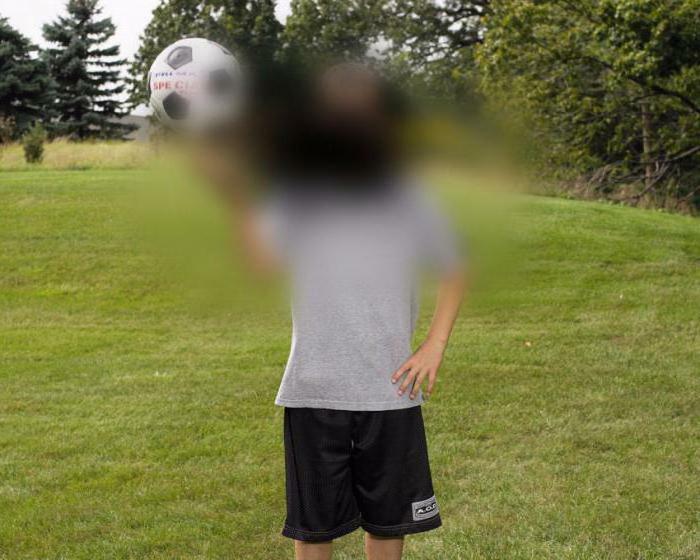
Central occlusion of the artery
This form of the disease develops suddenly, with a violation of venous outflow from the vessels of the retina. As a rule, it is diagnosed in patients with diabetes mellitus, atherosclerosis and other vascular pathologies. In this case it is noted:
- vision impairment;
- loss of field of view;
- problems with definition of sharpness of subjects;
- appearance of highlights and opacities.
Symptoms of central occlusion of the artery arise in proportion to the degree of obstruction. They appear unexpectedly and progress very quickly( from several hours to 2-3 days).
Retinal vein separation
This form of pathological process is characterized by similar signs. Patients complain of the appearance of white spots in front of the eyes. Possible loss of peripheral vision. Usually stroke only affects one eye. People with high blood pressure enter the risk group, and venous thrombosis is the main cause of the development of the disease.
The consequences of stroke are very unpleasant. Some patients develop puffiness, and complete loss of vision is not excluded. However, modern methods of treatment with the use of laser surgery can get rid of thrombus, avoid the development of complications. 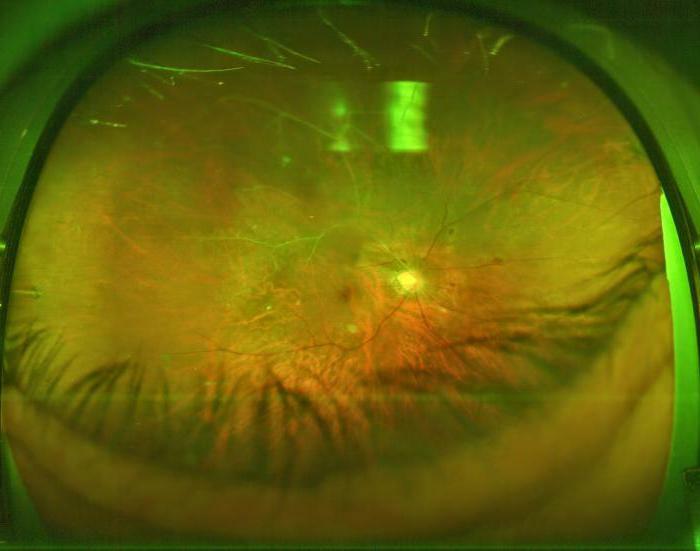
Arterial occlusion and retinal detachment
With retinal detachment, occlusion of the arteries is common. This is the most dangerous form of the disease, since in most cases it is asymptomatic.
Its main feature is the loss of peripheral vision. Pathology often transforms into a loss of central vision. In many patients with retinal detachment and occlusion of the arteries, the narrowing of the carotid artery, high blood pressure and various heart diseases are diagnosed. With timely treatment, the chances for a complete recovery of vision are quite high and amount to 80%.However, problems with distorted image perception can still be preserved.
Medical examination
You should immediately seek medical help if symptoms of artery occlusion and retinal detachment appear. Causes, symptoms, treatment and prevention of these pathological conditions - such questions are touched by oculists in their practice. And without the intervention of a neurologist, it is impossible to confirm the stroke of the visual apparatus.
The latter for the diagnosis use the method of fluorescent angiography. The essence of the examination is to assess the condition of the posterior wall of the eyeball. During the procedure, the doctor injects the patient with an intravenous special color solution. In this case, in a healthy person, it gives the bottom of the retina a yellowish-greenish shade. In the case of pathology, turbidity is clearly visible in the image. To make the picture clearer, the patient is pre-instilled with drops with the effect of expanding the cornea.
The oculist is engaged in a visual examination of the visual apparatus. If necessary, this specialist also conducts fluorescent angiography. Based on the complete clinical picture, a preliminary diagnosis is confirmed or refuted, after which a treatment for eye stroke is prescribed. 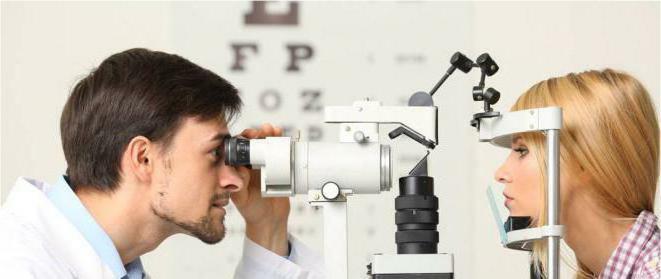
Therapy features
The choice of treatment tactics is largely determined by the form of the disease and the severity of clinical symptoms. As a rule, they resort to laser coagulation. This procedure allows to destroy and completely remove the formed thrombus. As a result, the blood circulation is normalized on the damaged area. Also, laser coagulation is recommended for the treatment and prevention of retinal detachment.
Causes and symptoms of the disease sometimes require a different therapeutic tactic. In this case, the patient is assigned hyperbaric oxygenation. During the procedure, the patient is placed in a sealed pressure chamber where oxygen is treated under a certain pressure.
Symptomatic therapy involves the use of drugs to improve blood circulation, normalize blood pressure and eliminate spasm. All drugs are selected individually, taking into account the characteristics of the clinical picture. 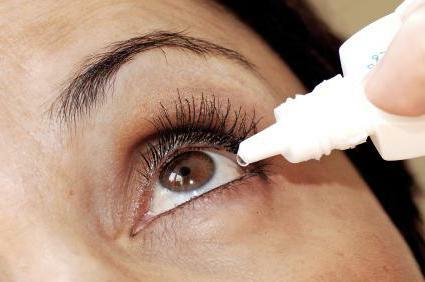
To improve the effectiveness of the treatment, doctors strongly recommend that all patients adjust their diet somewhat. You should give up fatty and fried foods, reduce salt intake. The diet should be varied with fresh vegetables and fruits. Also, doctors advise performing elementary gymnastics for the eyes, spending less time watching TV programs. The liberated time can be spent with profit, walking in the park.
What is the risk of a stroke of the eye?
Many diseases are unpleasant not only because of their manifestations, they are dangerous for subsequent complications. If the patient ignores the symptoms of the disorder and does not hurry to see a doctor, serious consequences can occur. We are talking about:
- color vision violation;
- appearance of "flies" before the eyes;
- partial or total loss of vision.
Even irreversible changes presented in the latter case can occur with patients diagnosed with a "stroke of the eye".How to restore vision after a developed pathology, it is very difficult to say. With a complete loss of doing this it is not possible. 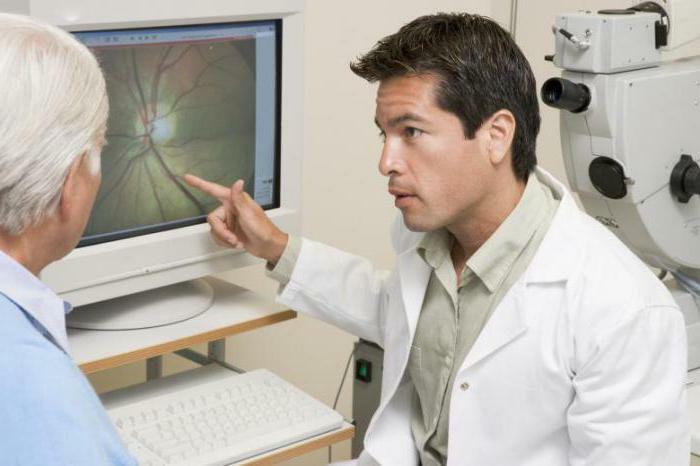
The health of any person and the quality of his life depends on the well-coordinated work of the basic systems of internal organs, in particular the visual apparatus. If there is a violation of its functioning, psychological changes take place. In some cases, patients need even third-party help from specialized specialists. Therefore, if the first symptoms of the disorder are found, you can not ignore the problem. It is necessary immediately to address to the doctor, to pass complex inspection, and if necessary also a course of therapy.
